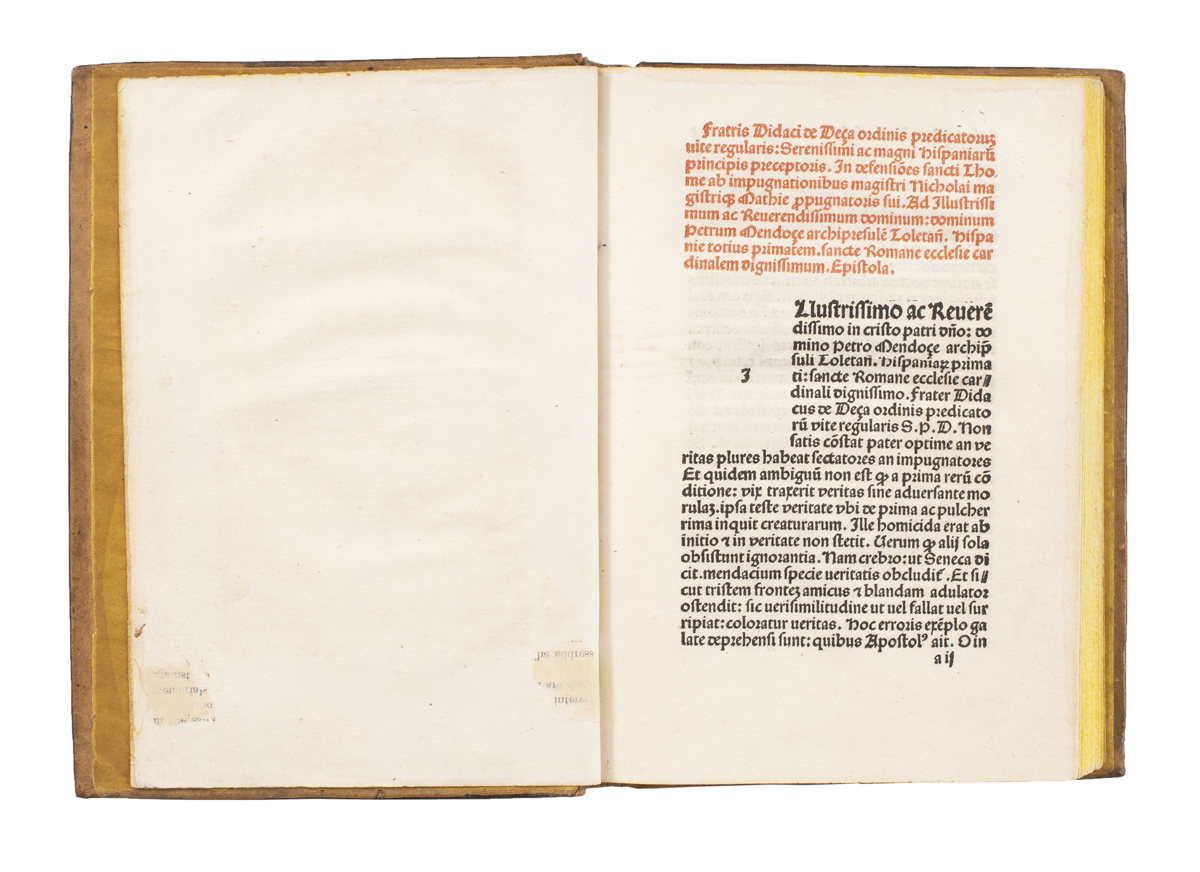
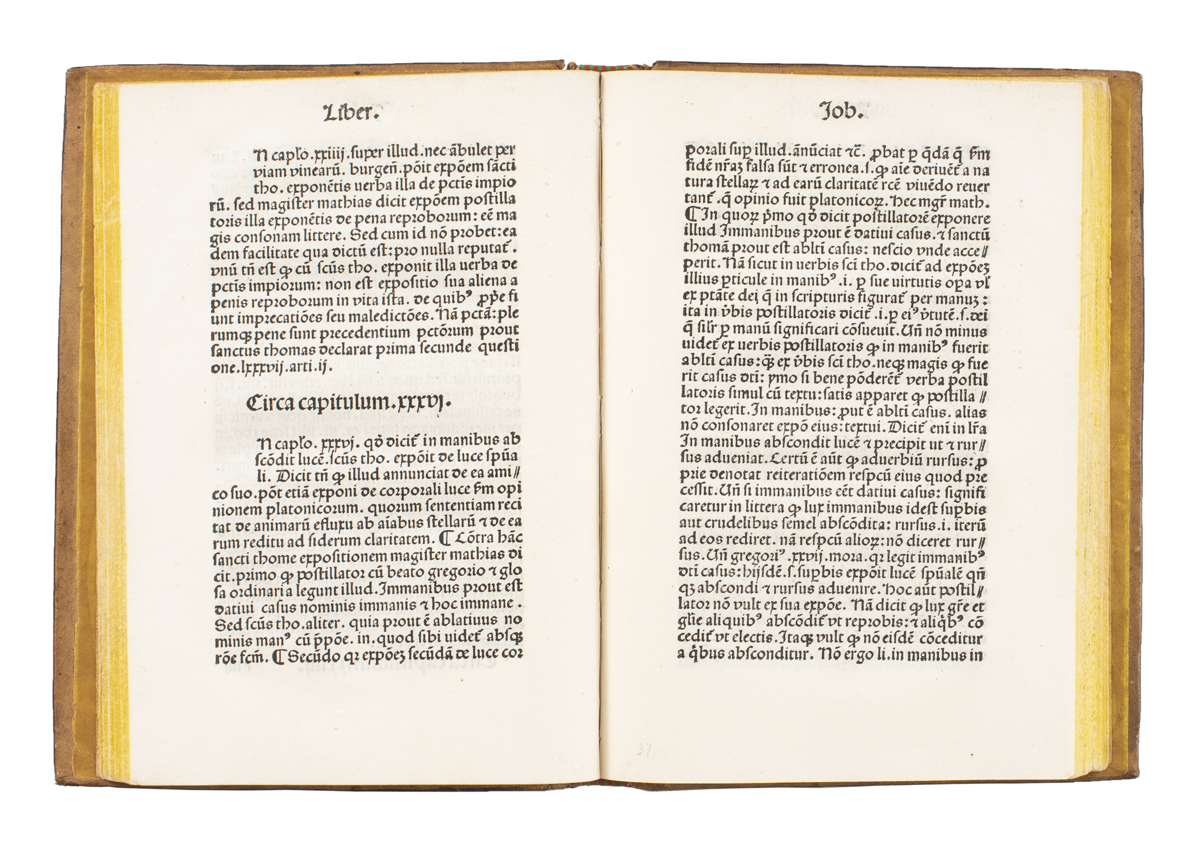
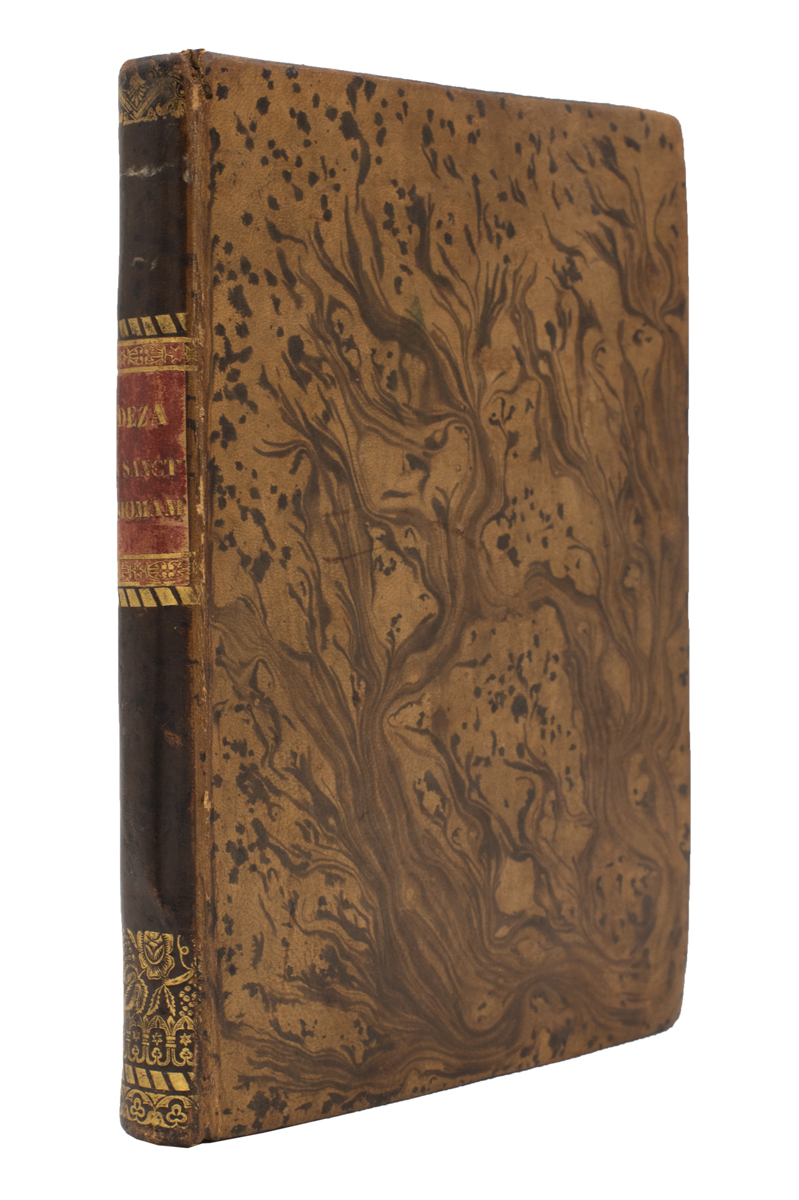
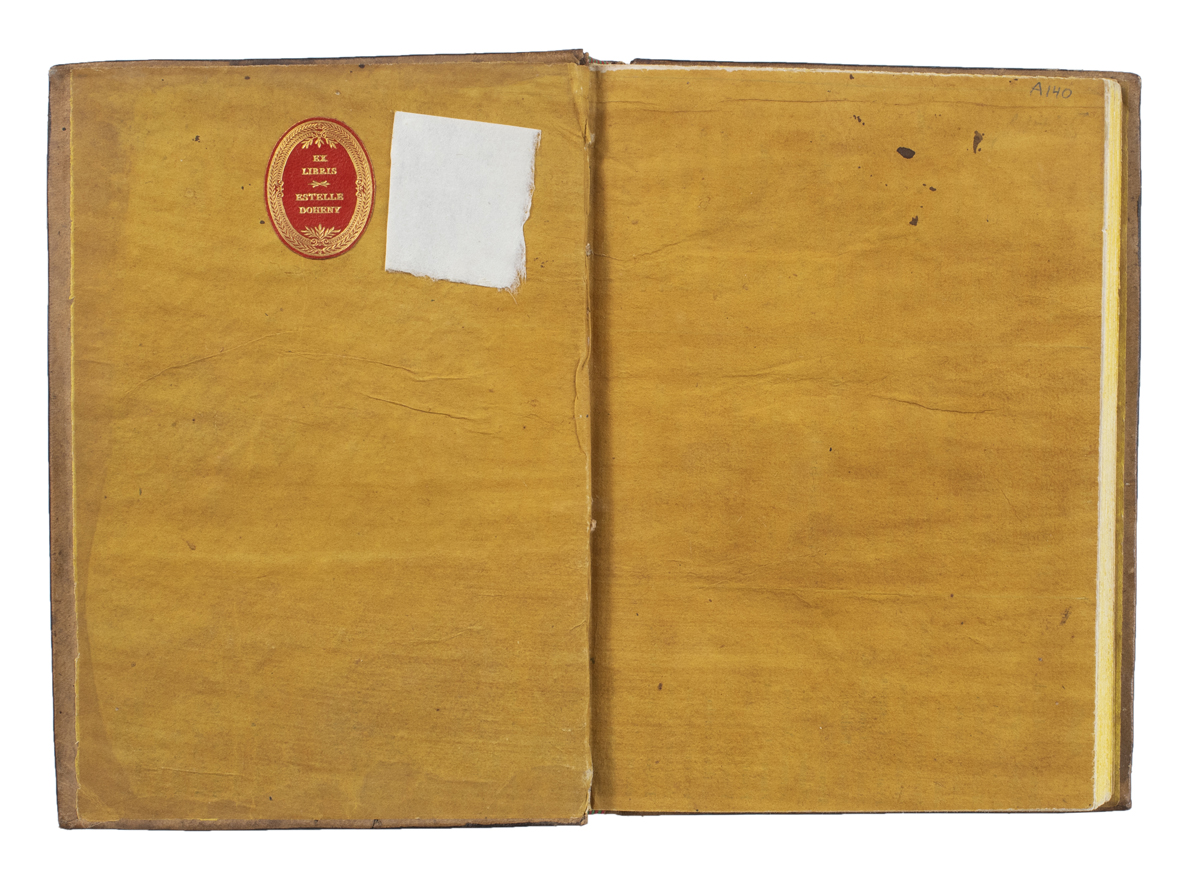
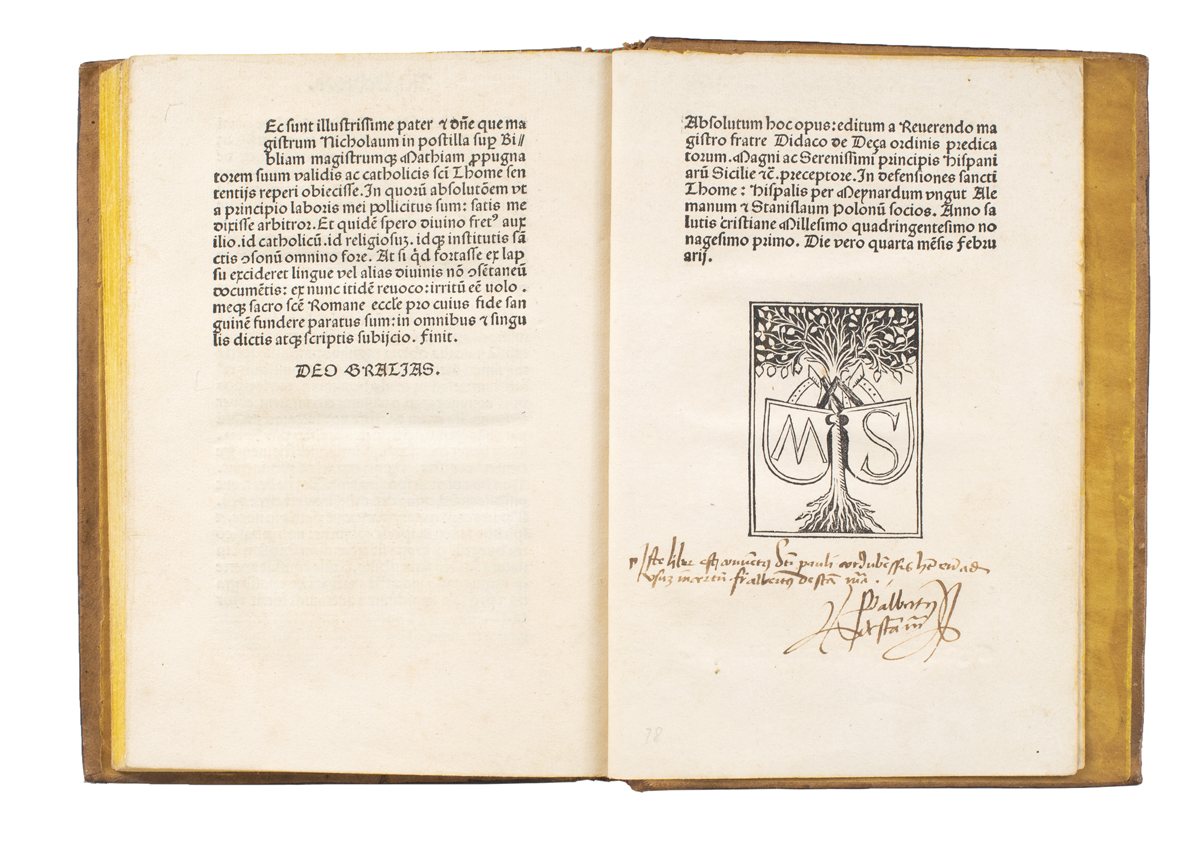
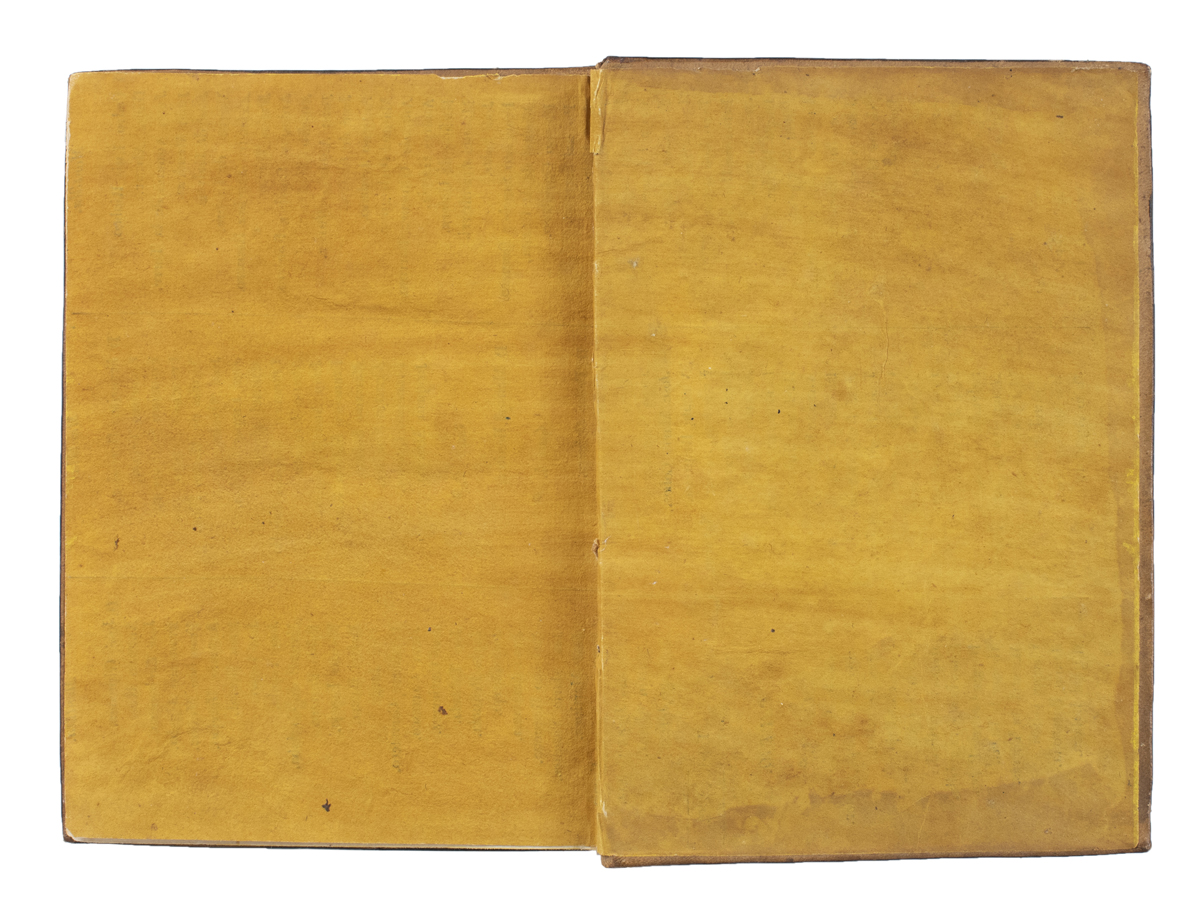
Rare Spanish Incunable from the Doheny Collection
DEZA, Diego de.
In defensio[n]es Sancti Thomae ab impugnationibus magistri Nicholai Magistrique Mathie.
Seville, Meinardus Ungut and Stanislaus Polonus, 4 February 1491.
Small 4to, ff. [80]; a–k8; a1 and k8 blank; printed running titles, initial spaces, drop-title on a2r printed in red, woodcut printers’ device to colophon; running titles slightly shaved on b4–6, but a fine copy; bound in nineteenth-century Spanish tree sheep, spine decorated in gilt with gilt red paper lettering-piece, edges stained yellow, ochre endpapers; minor rubbing to joints, corners lightly bumped, unobtrusive stain to lower board, endbands renewed; contemporary inscription to the last leaf (see below); Estelle Doheny’s copy, with her gilt morocco bookplate to upper pastedown.

Added to your basket:
In defensio[n]es Sancti Thomae ab impugnationibus magistri Nicholai Magistrique Mathie.
First edition, institutionally rare and the only copy to have appeared at auction for at least the last half century, of the influential main work of theologian Diego de Deza y Tavera (1444–1523), a towering figure in the Spanish Renaissance.
A brilliant young Dominican, Deza quickly gained several prominent ecclesiastical and academic posts, tutored Prince Juan, son of King Ferdinand and Queen Isabella (to whom Deza was confessor), and was instrumental in granting Christopher Columbus access to the monarchs and thus the commission of one of the most momentous journeys in history (as Columbus’ own letter to Deza in 1504 declares ‘And it is to be given to the Bishop of Palencia, [Deza] has always, ever since I came to Castile, favoured me and desired my honour … He who was the cause of Their Highnesses’ presence in the Indies’). Later in life, Deza would go on to succeed Tomás de Torquemada to the post of Grand Inquisitor, a role he executed with single-minded zeal and cruelty. His ruthless persecution of Jews failed to protect him from damaging accusations of practicing Judaism, likely spurred by political rivalries and founded upon his Jewish maternal line of descent.
Deza’s most lasting influence in philosophy finds its roots in the present work, published whilst he held the post of Bishop of Zamora, and was preparing – not least through this contribution to the body of the Second Scholastic school – for the post of Bishop of the university city of Salamanca (1494–1498). ‘Salamanca was also the site of the Dominican priory of San Esteban (St Stephen), located just steps away from the university. San Esteban, under the headship of Diego de Deza, propelled a theological reform of the Dominicans across Spain. Deza inhabited the Prima Chair of theology at the University of Salamanca during the 1480s where he improved the study of Aquinas both at the university and at San Esteban’ (D.M. Lantigua, in The Oxford Handbook of the Reception of Aquinas, OUP, 2021, p. 174). Notably, Deza redressed the teaching of St Thomas Aquinas on Peter Lombard’s Sentences against Scotist and nominalist interpretations; his aim was to defend Aquinas from charges made by Franciscan thinkers. Following Deza’s publications and reforms, it was indeed the Dominican current that prevailed in what would soon become the School of Salamanca, one of the most luminous and fecund centres of Renaissance philosophical thought: within a couple of decades, Deza’s much-cherished Thomistic renewal came to its culmination, standing as the most highly regarded proponent of advancements in philosophy, ethics, law, and economics.
The German printer Meinhard Ungut and the Pole Stanislaus had worked with Mathias Moravus (Matthias of Olmütz) at Naples, before setting up business in Seville, having carried punches and type models from Naples. Their publications excelled in elegance, as well as covering a variety of subjects, from liturgical to legal, to editions of classics – notably Seneca in the vernacular. Their partnership continued until Ungut’s death in 1499. Stanislaus carried on, first alone, then in partnership with Jakob Cromberger, and independently as the founder of a printing workshop in Alcalá de Henares, until 1504.
Provenance: Contemporary inscription to colophon placing the book in the use of Brother Albertus de Sancta Maria at the Royal Dominican monastery of San Pablo in Córdoba, who, unusually, adds a stylised signature to the inscription. The Royal monastery of San Pablo in Córdoba was endowed by Ferdinand III in 1236, only twenty years after the foundation of the order. It became an important centre for study and was the formative house of missionaries such as Fr. Francisco de Córdoba, protomartyr of the evangelization of America, and Fr. Jerónimo de Loaysa, the first Archbishop of Lima. San Pablo closed in 1835. Later in the celebrated collection of Estelle Doheny (1875–1958), sold at Christies New York, The Estelle Doheny Collection part I, 22 October 1987, lot 131. This is the only copy to be recorded at auction by Rare Book Hub.
HCR 6040; Polain (B) 1242; Proctor 9527; BMC X 37; GW 8259; Goff D145; ISTC id00145000. ISTC finds two copies in the UK (BL, Rylands) and four in the US (HAS, The Morgan, Huntington Library, St Bonaventure).